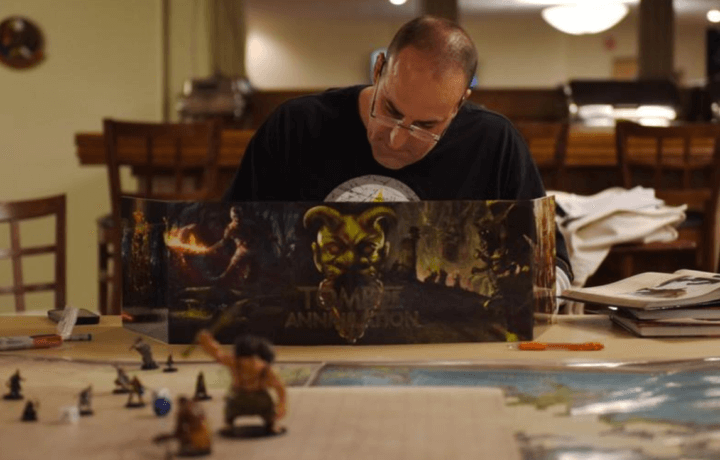We sometimes think of war, espionage, and terrorist threat responses as “break glass in case of fire” affairs, with the “they do X, we do Y” plans long worked out and printed in three-ring binders. However, national security planning does not generally work like a video game walkthrough. Human beings are irrational, emotional, unpredictable, and inventive. Intelligence professionals work hard to ensure that decision-makers have a solid foundation of the opposition’s behaviors, history, and motivations. Still, three-ring-binder responses can be halting at best. As Prussian commander Helmuth van Moltke famously said: “No plan survives first contact with the enemy.”
National Security Fields Bring Games to Life
To wit, “If they do X, we do Y” is useful only if they actually do X, and not X+1. Ultimately, in all human affairs, including the business of national security, the best you can do is come up with the ways in which decisions should be made, given unpredictable scenarios. And it takes hard work, a determination to avoid complacency, and outside-the-box thinking to keep security response plans from becoming ossified. Many cleared jobs need people to plan “left-field” attacks on the U.S. and wargame a response.
“Red cells,” as these are sometimes called, go back to 2001, when the CIA realized that it needed “alternate analyses.” Their job, according to a story in Foreign Policy, was to “piss off senior analysts. If we weren’t doing that, we weren’t doing our job.”
The precise name of this job varies slightly depending on the contractor or agency, but good keywords to use when searching the ClearanceJobs database of over 40,000 job listings include “threat emulation analyst,” “threat analyst,” and “threat emulation.”
Understanding the Reasons for Threat Responses
Storytelling and role playing are proving essential skills for American national security, and this sort of work is for Dungeons & Dragons players who want to go pro. They examine the state of global stability today and forecast the conflicts of tomorrow. They figure out how the enemy will attack, and how we will respond. Nuclear weapons, shooting wars stateside, civil war, terrorism—this is the job for people who want to be the Bond villain and James Bond at the same time. They test these plans in simulations involving real people who respond in impulsive and sometimes impressive ways.
In all this, analysts study not only what happened in the simulations, but why said things happened. Moreover, how we decide our manner of response is sometimes as important as the response itself in the after-action reports. It’s how intelligence agencies improve their own best practices.
Do you have what takes to plan the unimaginable across multiple domains (cyber, space, sea, land, air)? Then, after working out a plan of recovery and retaliation, testing your efforts? If so, here is what you need to know.
THERE ARE THREAT-SPECIFIC SUBFIELDS
War planners aren’t just pushing tanks around maps using those long sticks, pointing meaningfully at random objects. We fight wars across multiple domains, and we must game those wars accordingly. One such domain is cyber. One posting explains that a red cyber operator’s job is to “emulate a potential adversary’s offensive cyberspace operations and exploitation techniques against a targeted mission, system, network, component, or capability.”
As an enemy actor might do, operators gather information from open source resources “to identify exposed or compromised information, vulnerabilities, and misconfigurations.” They then go to work taking down U.S. assets during simulations, “forcing the target to operate in a degraded, disrupted, or denied cyber environment.”
THREAT ANALYSTS ARE GOING TO NEED A TOP SECRET CLEARANCE
No two ways about it. If you want to know the full measure of American threat response capabilities, you will need to go through a careful vetting process. As for education requirements, different companies offer flexibility. As we’ve written previously here at ClearanceJobs, the rules of the game are changing when it comes to higher education. (If a GED is good enough for Google, it’s fast becoming good enough for the defense world.)
For this job, a high school education is often enough, with some contractors asking for a baccalaureate of any stripe. (Technical writing isn’t the only area where poets and humanities majors can get a job in the defense industry. Because of the storytelling aspect of this job, an English degree can go a long way. Authors of techno-thrillers have long consulted with the U.S. government to game out threat responses.)
THE BACKGROUND THAT WILL GET YOU THE JOB
As for experience, having spent some time either as an intelligence analyst or in the field doing this sort of work operationally is a requirement for most positions. Because you will likely be working with the U.S. Army Training and Doctrine Command, a history of working with TRADOC will go a long way.
If you lack that background, don’t give up hope. It’s a testament to the defense industry’s willingness to “think like the enemy” that the usual boxes need not always be checked. Anyone with serious IT skills can be a contender. The vectors of attack that an enemy might use on the U.S. isn’t limited to explosives and cyber warfare. If you have a background as a financial analyst, can dig up goldmines as a researcher, know how to do research on social media and the “dark web”, or understand things like logistics and the supply chain, you have a place in the threat emulation community.
So here’s your chance: roll your D20 for initiative, and start submitting those resumes.




